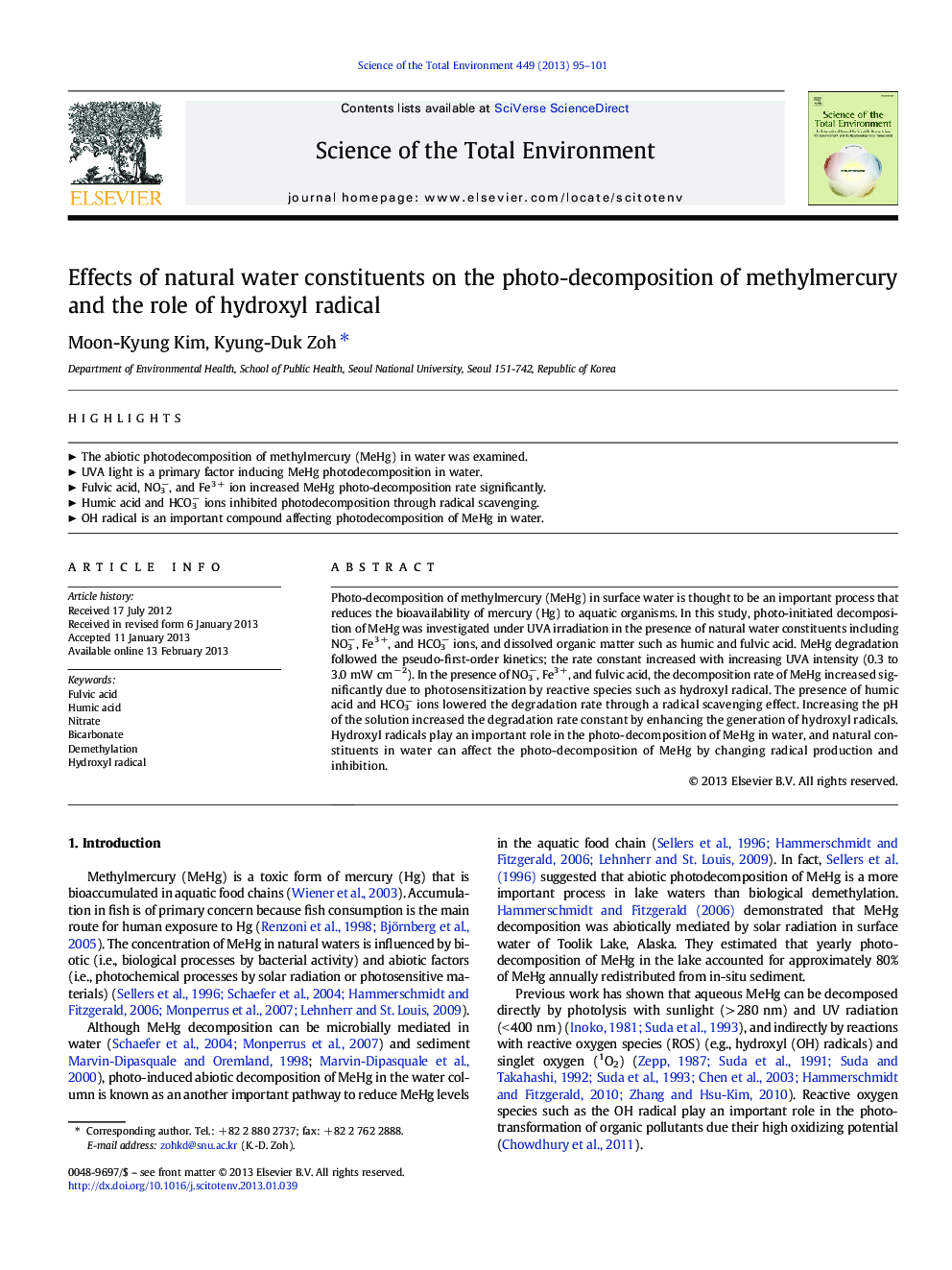| Article ID | Journal | Published Year | Pages | File Type |
|---|---|---|---|---|
| 4428844 | Science of The Total Environment | 2013 | 7 Pages |
Photo-decomposition of methylmercury (MeHg) in surface water is thought to be an important process that reduces the bioavailability of mercury (Hg) to aquatic organisms. In this study, photo-initiated decomposition of MeHg was investigated under UVA irradiation in the presence of natural water constituents including NO3−, Fe3 +, and HCO3− ions, and dissolved organic matter such as humic and fulvic acid. MeHg degradation followed the pseudo-first-order kinetics; the rate constant increased with increasing UVA intensity (0.3 to 3.0 mW cm− 2). In the presence of NO3−, Fe3 +, and fulvic acid, the decomposition rate of MeHg increased significantly due to photosensitization by reactive species such as hydroxyl radical. The presence of humic acid and HCO3− ions lowered the degradation rate through a radical scavenging effect. Increasing the pH of the solution increased the degradation rate constant by enhancing the generation of hydroxyl radicals. Hydroxyl radicals play an important role in the photo-decomposition of MeHg in water, and natural constituents in water can affect the photo-decomposition of MeHg by changing radical production and inhibition.
► The abiotic photodecomposition of methylmercury (MeHg) in water was examined. ► UVA light is a primary factor inducing MeHg photodecomposition in water. ► Fulvic acid, NO3−, and Fe3 + ion increased MeHg photo-decomposition rate significantly. ► Humic acid and HCO3− ions inhibited photodecomposition through radical scavenging. ► OH radical is an important compound affecting photodecomposition of MeHg in water.
